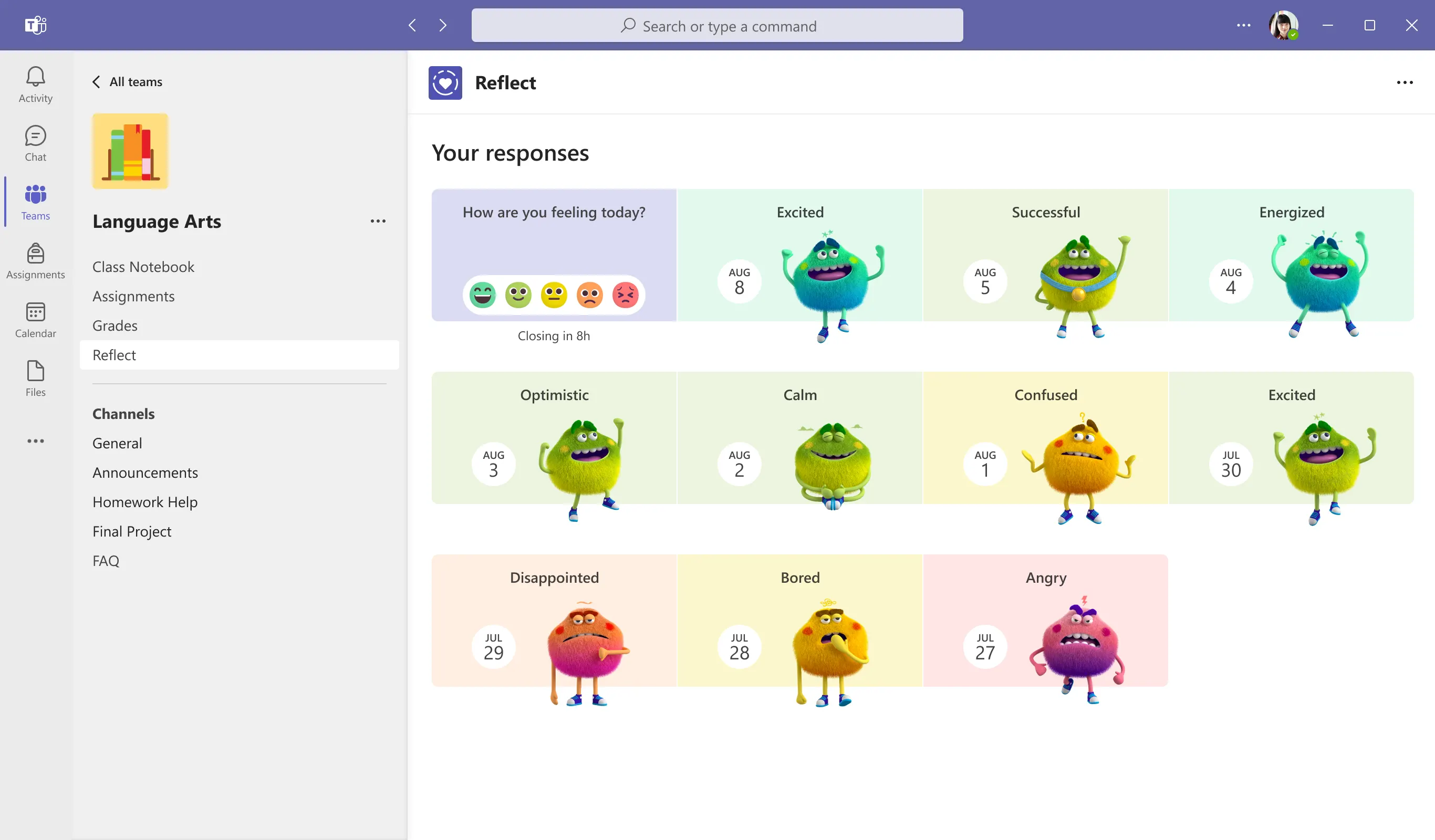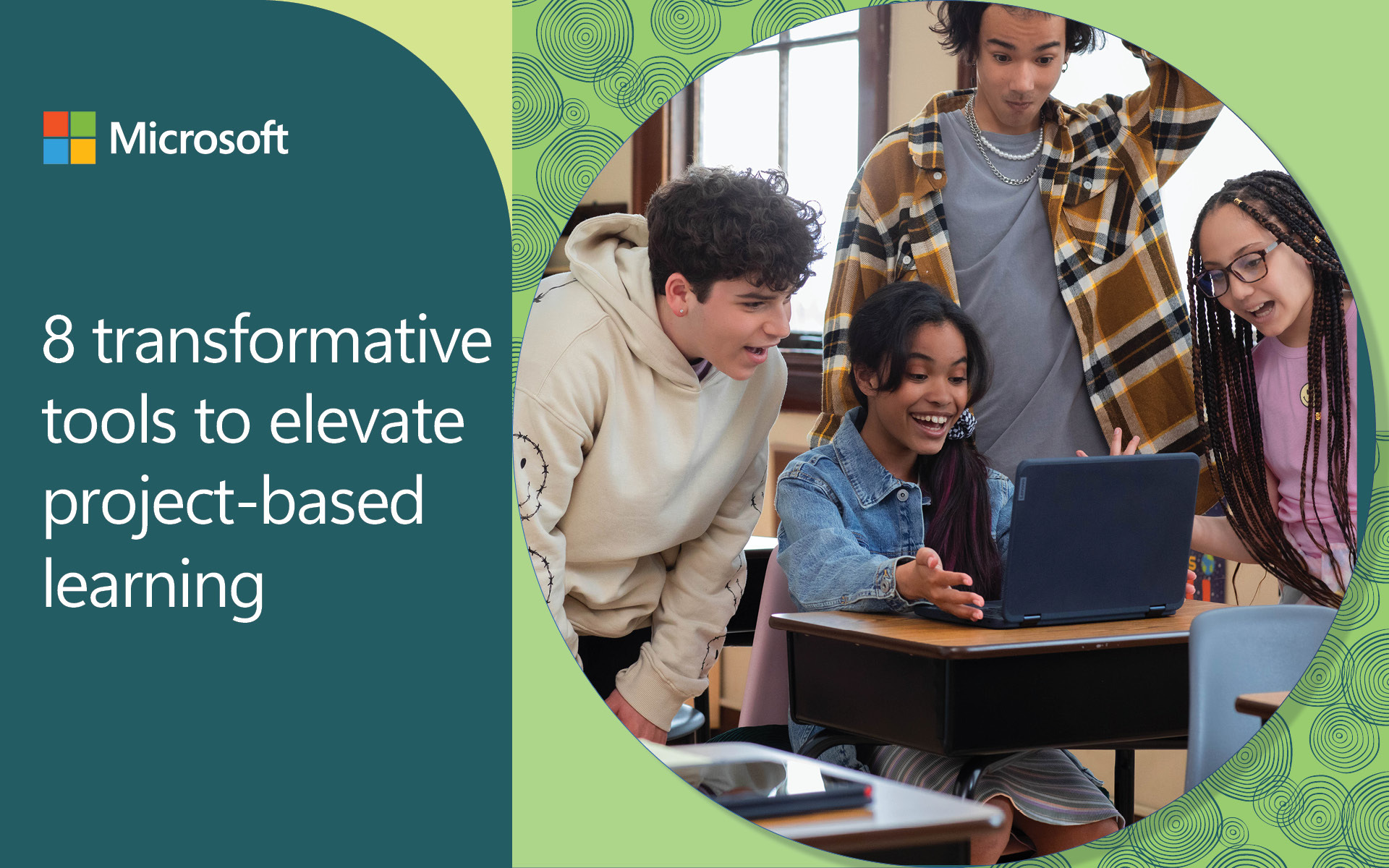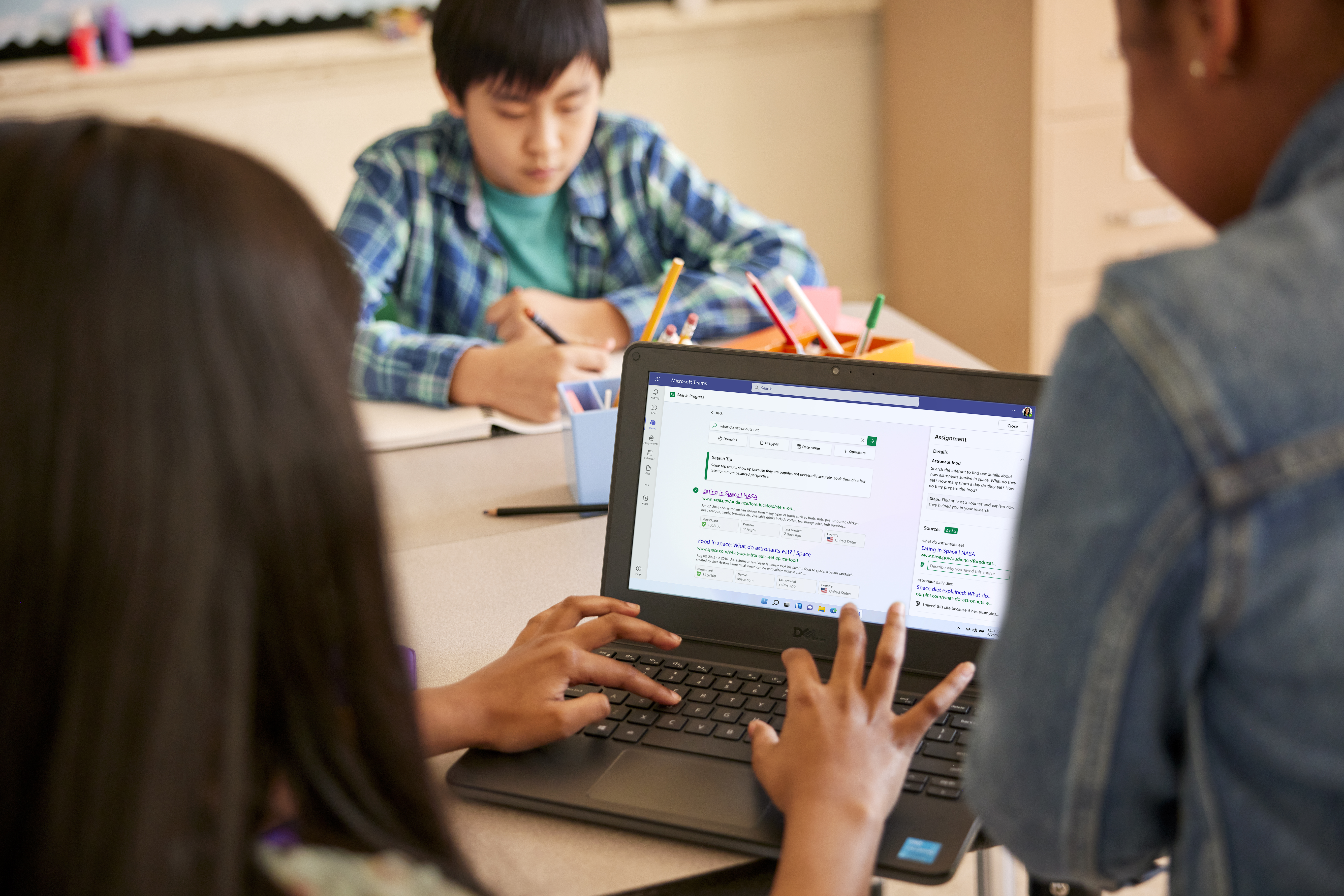In these challenging times, closing learning gaps and helping students catch up are top of mind for educators working to accelerate learning. But where does student well-being fit in with this? There’s a strong case to be made for focusing more heavily on assessing and addressing student emotional wellness. After all, helping students build confidence and gain self-awareness skills can drive positive learning outcomes and benefit them throughout their lives.
The latest accelerate learning paper, “Prioritizing and Supporting Student Well-being,” calls attention to the important role student well-being plays in education and highlights the built-in capabilities of the Reflect tool in Microsoft Teams. This tool can help build students’ emotional vocabulary to deepen their empathy, provide teachers with the opportunity to gauge their students’ well-being, and give schools more thorough data to identify and address student needs at scale.
Before diving into how edtech tools like Reflect can support well-being, it’s important to understand the relationship between emotions and learning. In the booklet “The Nature of Learning, Using Research to Inspire Practice,” which is part of a project from the Organisation for Economic Co-operation and Development (OECD), the authors state that one of the seven fundamentals of learning is that emotions are the gatekeepers of learning1. The reason for this is that emotion and cognition work together in the brain to guide learning. Positive emotions encourage recall and understanding, and negative emotions can disrupt it. That’s why it’s more important now than ever to focus on students’ social and emotional development and wellness.
“If we really want all students to leave school having developed certain academic, social, personal, and cultural capacities, we need to think really carefully about whether we as educators are creating the types of experiences that we know from research will help develop those capacities."— Dr. Dave Paunesku, Senior Behavioral Scientist at Stanford University
Many factors have contributed to students feeling negative emotions over the past few years, and there is much discussion among educators about how to best support students and create positive learning environments. In Houghton Mifflin Harcourt’s annual Educator Confidence Report, 72% of educators reported that accommodating students’ well-being needs was their largest concern, and 82% said they believed that an integrated, detailed well-being program would positively impact students2. Additionally, according to a 2021 report from the Thomas B. Fordham Institute, more than 90% of parents support programs that encourage students to acquire and practice life skills such as goal setting, problem solving, and self-confidence3—all elements that contribute to positive well-being. Perhaps the most compelling evidence to integrate social-emotional skills and well-being checks into learning environments is that the nonprofit Collaborative for Academic, Social, and Emotional Learning (CASEL)—a longtime leader in the social emotional learning (SEL) movement—reports that students who’ve completed SEL programs gain 11 percentile points in core academic areas4.

This data makes it clear that embedding social emotional education into curricula, while regularly evaluating students’ progress and emotional state, has significant wide-ranging benefits for students.
Integrating well-being checks into daily routines
There are many everyday moments that can be transformational for students. This includes moments when they have the opportunity to self-reflect, build and demonstrate empathy skills for their peers, and to learn to engage with the world meaningfully. Building check-ins into regular routines can help students recognize and name emotions, becoming “reflectors” of their own emotional lives and developing their capacity to learn and grow with intention. Regular check-ins can also help teachers assess their class's comfort with subject matter, to see where students may need more support. And since things can change quickly, it’s a good idea for teachers to use opportunities as they arise throughout a school day to “take the temperature” of their students.
Of course, for such check-ins to be effective and fit naturally into the day, it’s helpful to have a clear, easy way to send and receive communications. Ideally integrated directly into learning tools that students and teachers already use. It’s important for students to be able to see how their responses change over time so they can track their own growth, and for educators to be able to evaluate where additional support or intervention might be needed to help students grow.
Reflect in Microsoft Teams for Education is built directly into the digital learning hub that unites assessments, communication, and collaboration. To help students visualize their feelings, there are “Feelings Monsters” that depict more than 50 emotions. Students can use these to understand their emotions and communicate with their teachers. And in addition to helping students name different moods, these visualizations also help start conversations about what causes pleasant and unpleasant feelings, how they affect learning, and how to navigate them.

Individual emotions can be infectious and can drive the tone in a classroom, which can change as moods shift, similar to an ever-changing “thermostat.” Educators can use Reflect to gain information that helps them guide the tone of their class, and turn the energy up or down. With regular check-ins, teachers can respect and respond to the unique emotional lives of their students. Helping young people have insights into their emotional state can lead to increases in student leadership skills, student voice, and greater agency.5

Comparing well-being check-in tools
To evaluate the ease-of-use and effectiveness of Reflect check-ins, the authors of “Prioritizing and Supporting Student Well-being” reviewed the process for educators to create a Reflect check-in. The authors also reviewed the process for students to respond, and for either students or educators to review responses in Teams. Next, they evaluated the equivalent Google Classroom solutions. And since Google does not have a built-in well-being tool similar to Reflect, the authors reviewed the process over two applications: Google Forms and Google Classroom. (Note: Google does not have a comparable tool that provides well-being data to educators or students as Reflect and Insights does.)
The results of the review were clear. They showed that Microsoft Reflect was more effective, easier to use, and a more comprehensive tool for checking in on student well-being, helping students understand and express their emotions and providing educators with clear and actionable analysis of aggregated results. With built-in applications like Reflect, educators can better understand the needs of all students, review data to inform decision-making, and help students improve their academic performance.

Want to learn more about how Microsoft 365 Education solutions can assist educators with understanding students’ well-being? Read “Prioritizing and Supporting Student Well-being” and be sure to check out the other papers in the series so far:
- “Accelerating Learning for Students with Limited Internet Access”
- “Checking for Accessibility”
- “Accelerate Learning with Workplace Math Skills”
The next paper in the series will highlight read-aloud applications that support literacy, so look for that coming soon!
1 The Nature of Learning, Using Research to Inspire Practice | OECD
2 7th Annual Educator Confidence Report | Houghton Mifflin Harcourt
3 How to Sell SEL | Thomas B. Fordham Institute
4 What Does the Research Say? | CASEL
5 When Social Emotional Learning is Misused | Education Week




